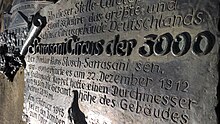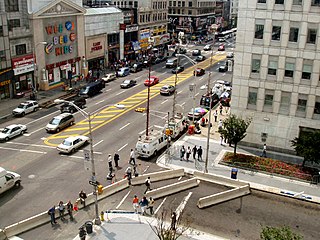
Media circus is a colloquial metaphor, or idiom, describing a news event for which the level of media coverage—measured by such factors as the number of reporters at the scene and the amount of material broadcast or published—is perceived to be excessive or out of proportion to the event being covered. Coverage that is sensationalistic can add to the perception the event is the subject of a media circus. The term is meant to critique the coverage of the event by comparing it to the spectacle and pageantry of a circus. Usage of the term in this sense became common in the 1970s. It can also be called a media feeding frenzy or just media frenzy, especially when the media coverage itself is covered.
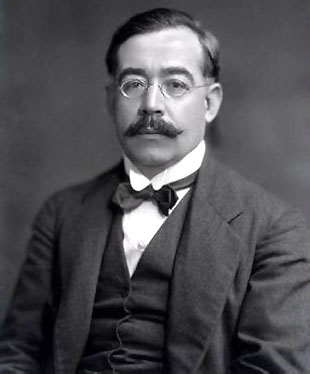
Leopoldo Antonio Lugones Argüello was an Argentine poet, essayist, novelist, playwright, historian, professor, translator, biographer, philologist, theologian, diplomat, politician and journalist. His poetic writings are often considered to be the founding works of Spanish-language modern poetry. His short stories made him a crucial precursor and also a pioneer of both the fantastic and science fiction literature in Argentina.
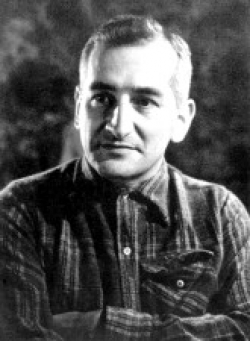
Héctor Germán Oesterheld, also known as his common abbreviation HGO, was an Argentine journalist, comics editor and writer of graphic novels and comics. He is widely celebrated as a master in his field and as one of the pioneering artists in Argentine modern comics.

Gustavo Adrián Cerati Clarke was an Argentine musician, singer-songwriter and record producer, who gained international recognition for being the leader, vocalist, composer and guitarist of the rock band Soda Stereo. He is widely considered by critics, specialized press and musicians as one of the most important and influential artists of Latin rock. Billboard magazine ranked Cerati as the 33rd best rock singer of all time.

José Carlos Marrone was an Argentine actor and humorist.
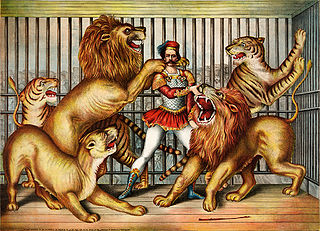
Lion taming is the taming and training of lions, either for protection or for use in entertainment, such as the circus. The term often applies to the taming and display of lions and other big cats such as tigers, leopards, jaguars, black panthers, cheetahs, and cougars. People often use lion taming as a metaphor for any dangerous activity. Lion taming occurs in zoos around the world to enable the keepers to carry out medical procedures and feedings.

Gustavo Barros Schelotto is an Argentine former footballer who played as a midfielder. He was the assistant manager of LA Galaxy.

Albrecht von Stosch was a German General of the Infantry and admiral who served as first chief of the newly created Imperial German Navy from 1872 to 1883.

Carlos Salim Balaa Boglich, known as Carlitos Balá, was an Argentine actor who specialized in children's entertainment. His trademarks were his bowl-cut hairstyle and nonsense catchphrases that include "¿Qué gusto tiene la sal?", "un gestito de idea", "un kilo y dos pancitos". "observe y saque fotocopia", among others. Balá also created a large gallery of characters that include Petronilo, Angueto the invisible dog, Indeciso, and Miserio.
Trude Berliner was a German actress. She was one of many Jewish actors and actresses who were forced to flee Europe when the Nazis came to power in 1933.

Gustavo Leonardo Bou is an Argentine professional footballer who plays as a forward for Talleres de Córdoba.

No Sé Si es Baires o Madrid is the third live album by Argentine recording artist Fito Páez. Released by RCA Records on June 23, 2009, it was recorded before a live audience at the Palacio de los Congresos in Madrid, Spain, on April 24, 2008. The album includes featured performances by Pereza, Diego del Morao, Sabú, Dani Noel, Joaquín Sabina, Pablo Milanés, Ariel Rot, Gala Évora, Marlango, Mavi Díaz and Coki.

Teatro Caupolicán is a theatre and music venue located on the San Diego street in Santiago, Chile. It was opened in 1936. During its long history has hosted sporting, political, and cultural events. Currently is an important concert venue for popular Chilean and international artists, with a seating capacity of 4,500 and a total capacity of 5,400.

Olinda Bozán was an Argentine film actress and comedian of the Golden Age of Argentine Cinema (1940–1960). Born into a circus family, she acted on the vaudeville circuit, and performed in silent and sound movies. She was trained by the Podestá brothers, one of whom she married, who have one of the most prestigious Argentine acting awards named for them. Bozán' appeared in 75 films and was considered one of the best comic actors of Argentine cinema in the 20th century.

Frank Brown was a clown, acrobat and circus entrepreneur with a long career in Argentina, where he was known as El Payaso Inglés.

Cecilio Pablo Fernando Podestá was a Uruguayan-Argentine stage actor, singer, acrobat, sculptor and painter. He is considered to be one of the most prominent actors of classical Argentina theatre, and along with his brothers, was one of the founders of the Circo criollo. A number of institutions and places are named after him, including a town in Buenos Aires Province, and film awards known as the Premios Pablo Podestá.

Estudios San Miguel was an Argentine film studio that was active in the 1940s and early 1950s. It flourished during the golden age of Cinema of Argentina, and at its peak was one of the major studios in Buenos Aires. Genres ranged from musical comedy to costume drama and gaucho thriller. Films included La guerra gaucha, co-produced with Artistas Argentinos Asociados, and the comedy Juvenilia (1943), both of which won several major awards. Eva Duarte, soon to become the first lady of Argentina as Eva Perón, appeared in two of the studio's films in 1945. The studio became overextended financially and ceased production after 1952.
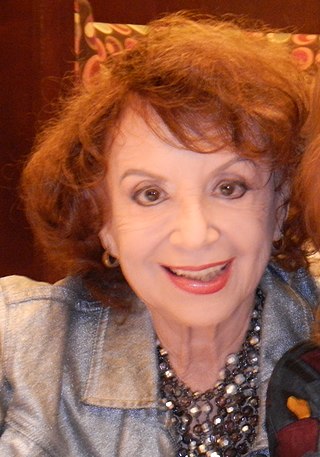
Delia Fiallo was a Cuban author and screenwriter who lived in Miami, Florida. She was one of the most distinguished representatives of the contemporary romance novel, dabbling in various genres which appeared in her literary output.

Pan y Circo is a Mexican Spanish-language talk show TV series that premiered on Amazon Video on August 7, 2020. The show is hosted by actor Diego Luna and was produced by La Corriente del Golfo, a production company run by Luna and fellow Mexican actor Gael García Bernal. In each episode, Luna and six guests sit for a meal prepared by a notable Mexican chef and discuss some sociopolitical issue. The guests include politicians, activists, academics, artists and celebrities. The show's first episode was filmed last, during the COVID-19 pandemic, and shows Luna and his guests all sitting at home, eating while videoconferencing together.

Antonio Giarola born in 1957, is an Italian poet, circus and theater director and circus historian.


